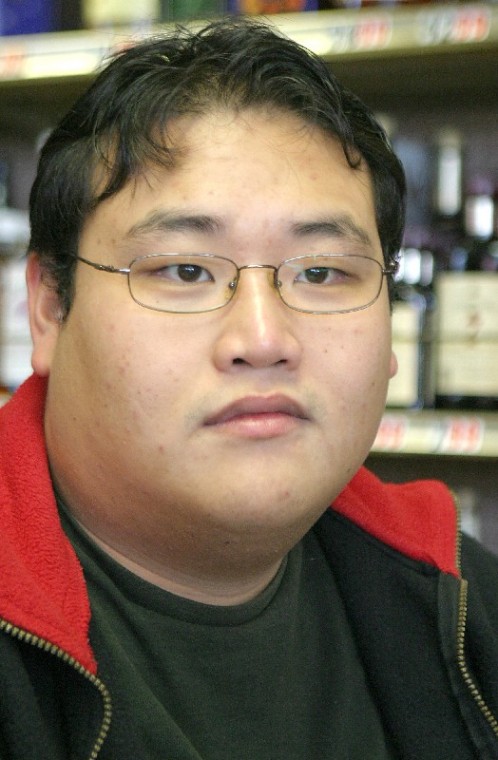
Fee used to curb tobacco sales to underaged
Gone are the days when tobacco commercials filled the airwaves
and television journalists would light up on screen during
interviews. The risks involved in smoking cigarettes and using
other forms of tobacco
– lung cancer, emphysema and other diseases – are well
documented. But despite the well-known risks of smoking, 6,000
California minors smoke their first cigarette each day and nearly
2,000 people under the age of 18 become established users,
according to the American Lung Association of Califor
nia.
Fee used to curb tobacco sales to underaged
Gone are the days when tobacco commercials filled the airwaves and television journalists would light up on screen during interviews. The risks involved in smoking cigarettes and using other forms of tobacco – lung cancer, emphysema and other diseases – are well documented. But despite the well-known risks of smoking, 6,000 California minors smoke their first cigarette each day and nearly 2,000 people under the age of 18 become established users, according to the American Lung Association of California.
Last spring, Hollister City Council voted in favor of a tough city ordinance that prevents kids from buying tobacco at local stores.
“Kids are aware of the risks with all the media on smoking,” said Mike Torres, a health educator for the San Benito County Tobacco Education Program. “California is a leader in the United States for anti-smoking.”
With the ordinance passed in March of 2006, Hollister has taken on the role of a leader against underage tobacco sales for the county.
“Hollister merchants have been notified and they should all have their licenses by now,” Torres said. “The ordinance calls for a minimum of one youth access survey a year.”
It has long been illegal to sell tobacco to people under 18. San Benito health officials have been conducting youth access surveys and tracking data since 1994. For the survey, health officials send in an underage person to purchase tobacco. The kids do not use fake identification and if asked for an ID, will flash their actual license or school id.
The recently passed ordinance in Hollister requires any merchant that sells tobacco to pay a $269 annual permit. The money from the permit is used to enforce the ordinance. When the youth access survey is conducted in early 2007, those merchants who sell to underage people will have their tobacco license revoked for 30 days and will pay a fine.
“All we want them to do is ask for ID and get proof that [customers] are 18 or older,” Torres said.
Torres has recently turned his sights on San Juan Bautista and has the city council considering an ordinance.
In San Benito, the youth access survey has resulted in a variety of sales levels. At its worst in 1994, more than 40 percent of the stores surveyed in San Benito County sold cigarettes to minors. With merchant education, the numbers dropped to less than 5 percent in 1998.
But the numbers spiked again in 2000 and 2005. Health educators believe the increase in sales could be due to change in ownership or staff. In 2005, one in three stores visited sold to minors during the survey. 42 stores were surveyed.
In California communities where strict licensing ordinances have been passed, the communities have seen dramatic decreases in tobacco sales to minors.
Sales in Berkeley dropped from 38 percent to 5.8 percent after they adopted a $300 annual licensing fee.
Torres presented information about the ordinance program to the San Juan Bautista City Council in October and again in December. City manager Jan McClintock said the city staff is still researching the impact of such an ordinance on the city.
“[The city council members] were concerned about the cost of enforcement,” McClintock said. “They were concerned about the cost for the businesses and their primary concern is that we have so few businesses in town that this would impact.”
Torres and his staff have identified just four businesses that sell tobacco in San Juan Bautista, though the staff would still need to conduct a thorough survey of merchants. Sometimes unconventional merchants sell tobacco, such as bakeries or ice cream vendors, he said.
In Hollister, the tobacco license fee pays for enforcement of the program and it is self-sustaining.
“When we do [the survey] for the whole county, we do it in an afternoon,” Torres said. “So looking at four stores won’t even take an hour.”
Still the SJB council has reservations about other costs associated with the program. McClintock listed the cost of attorneys, monitoring legislation and collecting fees.
“The bottom line is when you are administering a program, there is a certain base cost and then there is a per store cost,” McClintock said. “We will have that base cost and we are only going to have a few businesses to spread it out among.”
The council will further discuss the ordinance and costs associated with it at a January meeting.
Melissa Flores can be reached at mf*****@**********ws.com.
By the numbers
– $151.1 billion – amount of money made on tobacco sales by convenience stores nationwide in 2005
– 34.4 – percentage of total sales that tobacco sales make up for convenience stores
– $372,555 – average revenue from tobacco sales per convenience store









